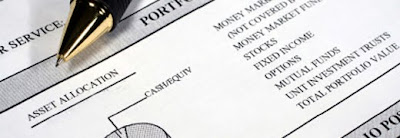
Traders can all agree that synthetics are also combinations of options and/or stock that replicate some other position.
For example, buying stock and selling a covered call is synthetically equivalent to a naked short put. Buying stock and buying a protective put is equivalent to buying a long call. Buying a call and selling a put is equivalent to buying stock. You may already understand synthetic relationships, and if you’re into “book learning,” you might realize that there ain’t no arbs any more. You may have relegated synthetics into the “thanks, but no thanks” category.
Let’s start with the most basic trade of all, buying stock. Say you buy 100 shares of XYZ stock for $120 per share. The total value of that stock is $12,000. In a regular margin account, you’d need at least $6,000 of available dollars to put on that position. And if you don’t have the cash in your account to cover the $12K, you’ll have to borrow $6,000 from your broker. Even if you do have the cash, you’ll stop earning interest on that money because you spent it buying the stock.
Now let’s look at synthetic long stock, which is a long call and a short put at the same strike price and the same expiration and has a risk/reward profile just like long stock itself. Don’t believe me? Load it up as a simulated trade on the Analyze page and see for yourself. You can buy the March 120 call for $2.25 and sell the March 120 put for $1.75 and make money if XYZ goes up, and lose money if XYZ goes down. But why would you want to do this?
First, you bought the call and sold the put (known as buying the “combo”) for a $0.50 debit. Not including commissions, $50 came out of your cash balance. With the stock trade? $12,000. You’re either not borrowing money, or you’re still earning interest on that cash. Second, although you know that Reg-T (Regular Trading) margin requirements won’t let you have the same risk exposure as $12,000 worth of stock and hold only $50 in your account, the margin requirement for the combo is less. The margin on the combo is the margin on the short put, which in this case is 20% of the underlying stock value minus any out-of-the-money amount. That comes to $2,400.

So, $50 versus $12,000 cash. And $2,400 versus $6,000 margin requirement. The combo is 2-for-2 so far. But the commission on the combo is two option orders, which in this case would be about $5.90, compared to $5.00 to buy the stock. And the combo won’t receive any dividends that the stock might pay. If the combo is now 2-for-4, how do you weigh the pros and cons? The commissions on the combo trade can be much higher, depending on your commission structure. But as a percentage of the risk of the position, the commissions represent a small fraction of the risk and potential reward you’re getting. In this case, commissions aren’t likely to make or break the trade.
And dividends? They’re nice because they can offset the interest expense when you buy the stock. But you have to hold it through the ex-dividend date, which you may or may not want to do, and the interest you are charged is often greater than the dividend you might get.
In a purely academic world, there’s no financial benefit to trading the combo over the stock. That’s true, but only in the academic world are every trader’s borrowing and lending rates equal. In the hyper-real world of trading, your borrowing rates as a retail trader are typically much higher than a market maker’s rates. The combo is priced in the open market, based largely on the market maker’s rates.
That’s the rate you would be paying if you buy the combo. But your borrowing rate as a retail trader is a broker call. In the XYZ example, your interest cost if you buy the combo is that $0.50 debit. But if broker call is 8%, for example, and you hold the stock for three months, you would pay $240 in interest. In this case, the combo would make more financial sense.











